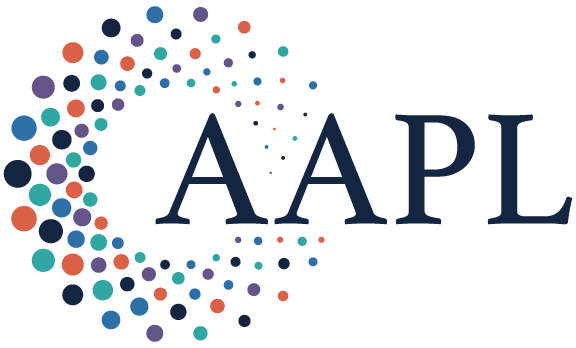Summary:
Drawing on extensive research and experience advising organizations from the U.S. Army to Microsoft, the authors outline five conversations every leader should have with their teams to build a more consistent and effective communication culture.
Effective communication is the foundation of high-performing organizations, particularly in an era of remote work and an expanding array of digital tools like Slack, Teams, WhatsApp, and internal digital bulletin boards. Yet many leaders fail to set clear communication norms, resulting in burnout, inefficient onboarding, wasted time, and reduced productivity.
Consider a few real-world breakdowns. A manager sends a detailed memo ahead of a decision-making meeting—only to discover no one read it. A colleague misses an urgent Zoom call because the alert was sent via Slack, which they rarely check. A CEO delays approval of a six-page memo because the sender didn’t include a summary in the email body. And a leader preparing for a board meeting receives five inconsistent reports from five different business units, wasting hours harmonizing them.
These examples illustrate the friction that arises when communication norms are unclear. As AI-assisted writing becomes more prevalent, written communication volume will only grow. This makes it even more critical to establish clear norms that prioritize readability—ensuring that human readers can easily process information, no matter whether it’s authored by a person, an AI, or a collaboration between the two.
We’ve conducted hundreds of randomized experiments on effective communication and coached dozens of organizations on improving their writing cultures—from the U.S. Army to Microsoft, from the Mayo Clinic to startups. And we’ve learned that there are several essential topics that leaders and teams must address to build their own effective writing culture—and avoid the kinds of problems described above.
Responsiveness Expectations
One of the bigger stressors in workplace communication can be mismatched urgency expectations. Research on “email urgency bias” shows that recipients often feel pressured to respond faster than senders actually expect. Conversely, some messages requiring quick decisions go unnoticed for days. Both scenarios create unnecessary friction and slow teams down.
To prevent these misalignments, organizations should establish clear norms for response times across different communication channels. For instance, a team might agree that emails require a 24-hour response, while Slack or Teams messages need acknowledgment within a few hours. Just as importantly, teams should have a shared practice for letting senders know when a timely response isn’t possible—preventing frustration and bottlenecks.
In addition to response speed, teams must clarify when employees are expected to engage. Without explicit norms, after-hours communication can blur work-life boundaries, leading to burnout and uneven workloads. To prevent this, some organizations establish “quiet hours,” implement automated reminders about communication boundaries, or encourage the use of “send-later” features to delay messages outside of working hours. By proactively setting these expectations, leaders foster a work culture that balances responsiveness with well-being—ensuring employees know when they need to be available and when they can fully disconnect.
Specific Channels for Specific Uses
A manufacturing CEO we have advised expressed frustration that updates arrived inconsistently across multiple platforms, making it easy to miss critical information. “I have to check every platform… it leads to me missing key information, getting time-sensitive updates too late, and wasting too much time.”
People and teams vary in how they use different communication channels. For some, urgent requests are sent through text message or WhatsApp, for others it’s Slack or Teams. For others it’s email or short memos. As the CEO quoted above laments, this can lead to costly inefficiencies. Mapping common activities to specific channels can solve this. Explicitly setting these norms can save time and reduce the risk of missing key information. As with every topic we discuss, there is no single right answer. Being inconsistent within teams, though, can be costly.
Make Reading Easy
Writing for Busy Readers: Communicate More Effectively in the Real World (co-authored by Todd along with Jessica Lasky-Fink), lays out six science-based principles for writing so busy people will actually read and respond. The core idea? Make it easy for skimmers. While the specifics vary by context, teams that establish clear norms around readability can ensure that their messages get through with minimal wasted time.
One of the most important principles is less is more. As Blaise Pascal famously wrote, “I’m sorry this letter is so long. I would have written a shorter one if I’d had more time.” Our research supports Pascal’s wisdom. In one experiment, we randomly assigned 7,000 elected and appointed leaders to receive either a 129-word request to complete a survey or a version where we removed the middle sentences so it was only 49 words. When we tested both versions with an independent group, most assumed the longer one would be more effective. But the data told a different story—cutting words nearly doubled the response rate.
However, brevity isn’t always the ideal approach. A team at the United Nations that one of us (Todd) worked with encountered an unexpected challenge: Reports were capped at 6,500 words, and most submissions predictably reached that limit. While a shorter, 3,000-word report might be more reader-friendly, it could also be perceived as the writer not doing a thorough job. In this case, the word limit unintentionally became a word-length expectation—reinforcing the idea that anything shorter was incomplete. This is why leaders must be publicly committed to resetting the organizational norms. Without buy-in, less could still be more effective, but more could be seen as better.
. . .
Effective communication isn’t just about writing less—it’s about making reading easier. But ease looks different in different settings. That’s why teams should explicitly define their communication norms, ensuring clarity and consistency in everything from emails to reports. Once those expectations are clear, organizations can reinforce them across their teams and workflows.
Copyright 2025 Harvard Business School Publishing Corporation. Distributed by The New York Times Syndicate.
Topics
People Management
Communication Strategies
Trust and Respect
Related
Stop Running So Many AI PilotsManaging a Productive Prima DonnaFrom Frustration to Satisfaction: Enhancing Phone Skills in Your Medical OfficeRecommended Reading
Operations and Policy
Stop Running So Many AI Pilots
Operations and Policy
Managing a Productive Prima Donna
Operations and Policy
From Frustration to Satisfaction: Enhancing Phone Skills in Your Medical Office
Motivations and Thinking Style
The Surprising Success of Hands-On Leaders
Motivations and Thinking Style
Become an Octopus Organization
Motivations and Thinking Style
Managing Your Team When the C-Suite Isn’t Providing Strategic Direction


